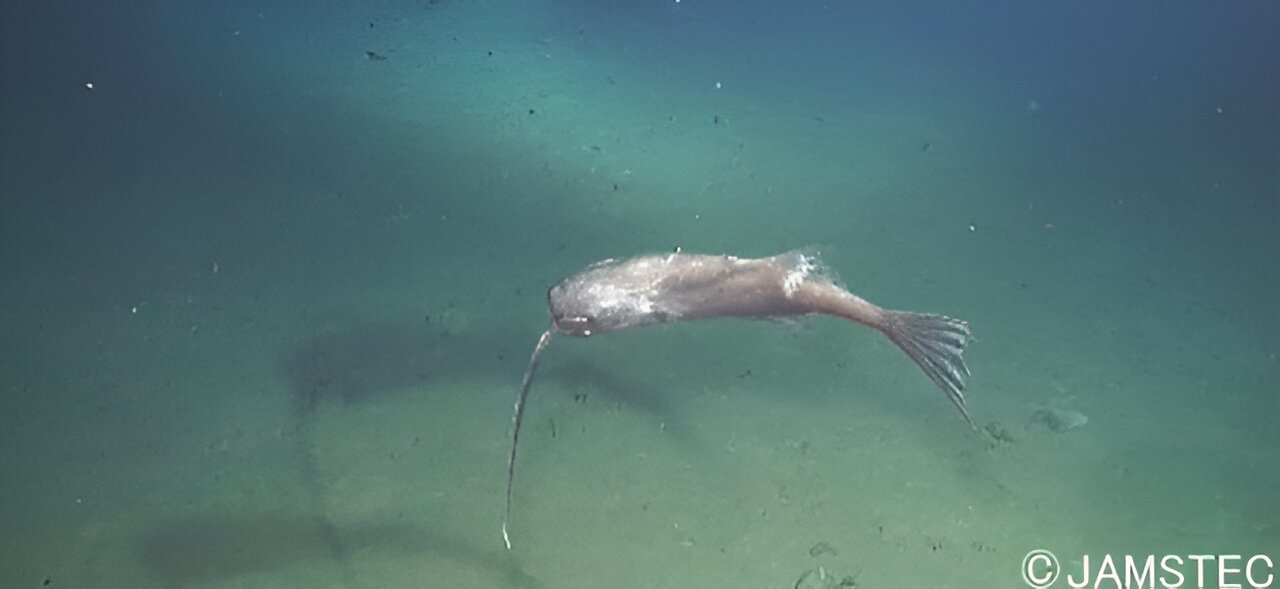A multi-institutional team of oceanographers and marine biologists has found evidence showing that some deep-sea species of angelfish spend their entire lives swimming upside down. In their paper published in the Journal of Fish Biology, the group describes their study of video captured by several remotely operated undersea vehicles.
Prior research has shown that some species of angelfish have natural lures that hang from their faces—the lures attract bacteria, which attract prey. Prior research has also shown that some angelfish living in the deep sea are large, up to 45 centimeters, with extremely long lures—in some cases, up to four times their body length—and that the lures have bioluminescence.
Up until now, researchers have assumed that the fish used their natural lures in the same way as their smaller cousins. But that is not the case, as the researchers with this new effort discovered when studying video obtained via an ROV conducting research in the Izu-Ogasawara Trench off Japan—it showed a large angelfish with its extremely long lure swimming upside down. This phenomenon had been seen by other researchers back in 1999, but it was presumed anomalous.
Intrigued by the finding, the researchers studied video captured by other ROVs and found observations of angelfish swimming in an inverted position in eight of them. In studying the imagery, the research team found that it was not a behavior used for a specific activity, such as fishing—it was a full-time behavior. Regardless of what the fish were doing, they were doing it upside down.
The researchers suggest that the fish evolved the behavior after finding it easier to manipulate such a long lure in an inverted position, in which the lure hangs from the top lip, which is closest to the sea bed when the fish is inverted. The findings show just how valuable ROV research has become in research involving deep-sea creatures.
More information:
Andrew L. Stewart et al, Upside‐down swimming: in‐situ observations of inverted orientation in Gigantactis, with a new depth record for the Ceratioidei, Journal of Fish Biology (2023). DOI: 10.1111/jfb.15609
© 2023 Science X Network
Citation:
Some species of angelfish may spend their whole lives swimming upside down (2023, November 22)
retrieved 22 November 2023
from https://phys.org/news/2023-11-species-angelfish-upside.html
This document is subject to copyright. Apart from any fair dealing for the purpose of private study or research, no
part may be reproduced without the written permission. The content is provided for information purposes only.
Denial of responsibility! TechCodex is an automatic aggregator of the all world’s media. In each content, the hyperlink to the primary source is specified. All trademarks belong to their rightful owners, and all materials to their authors. For any complaint, please reach us at – [email protected]. We will take necessary action within 24 hours.

Jessica Irvine is a tech enthusiast specializing in gadgets. From smart home devices to cutting-edge electronics, Jessica explores the world of consumer tech, offering readers comprehensive reviews, hands-on experiences, and expert insights into the coolest and most innovative gadgets on the market.


